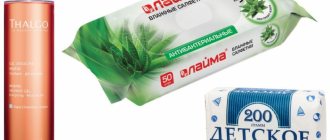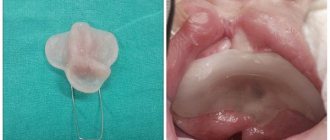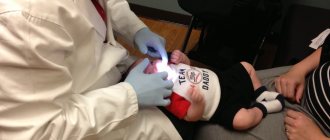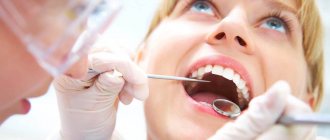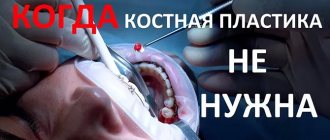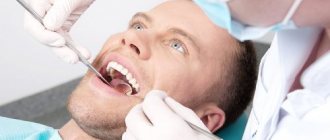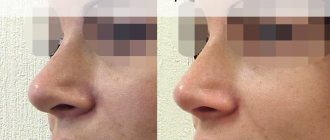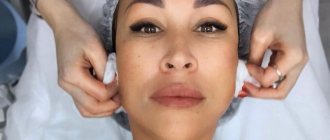| Appointment with a surgeon in Moscow on the same day of treatment | Reception is strictly by appointment, make an appointment by phone: +7 | Prices for services | Reviews about the clinic |
Removing stitches
- this is a manipulation that is carried out a certain time after their application. Generally, sutures are removed after the wound has healed and a scar has formed. However, such a procedure is also necessary if the wound festers - this ensures the outflow of its contents.
It is important to remember that stitches must be removed on time. Otherwise, an inflammatory process may begin due to the fact that the fixing material is foreign to the body. In addition, tightening can cause surgical threads to grow into the tissue, which will make the procedure quite painful.
Make an appointment with a surgeon by phone or by filling out the online form
| Select a clinic | Abdominal ultrasound | Gastroenterologist | Calling a surgeon to your home |
Useful information on the topic:
- Diagnosis of surgical diseases
- Treatment of surgical diseases
- How is a consultation with a surgeon carried out?
- Examination by a surgeon
- Surgery - the science of internal medicine
- How is a surgeon's appointment carried out?
- Pediatric surgeon
- Removal of skin tumors
- Paid surgeon
Stitch removal procedure
First of all, the suture site and instruments are treated with an antiseptic to ensure sterility, then the thread is grabbed with a serrated clamp and pulled slightly out of the skin. Using very sharp thin scissors, cut the thread in the place that was under the skin. Then, using a clamp, the thread is slowly pulled out so that the part of the thread that was above the skin and the knot do not pass under the skin, because this can damage the blood vessels and cause infection.
How are sutures removed?
Preparation for the procedure begins with informing the patient about the upcoming procedure and its necessity. As a rule, this happens on the eve of the event.
Before removing the sutures, the wound surface is treated with an antiseptic solution. Further manipulations are carried out using surgical scissors and anatomical tweezers.
During this operation, the end of the nodule is grabbed with tweezers, lifted and pulled in the direction opposite to the one in which the wound was sutured. When 2 mm of white thread appears above the surface of the skin, it is carefully intersected and very carefully removed.
After completing these manipulations, the integrity of the wound is checked. Next, in order to prevent infection and speed up the healing of the skin, the postoperative scar is treated with an antiseptic solution, after which a sterile fixing bandage is applied to it.
Useful information on the topic:
- Calling a surgeon to your home
- Callus
- Abscess on finger
- Ingrown nail
- Felon
- Wart removal
- Removal of condylomas
- Abdominal ultrasound
- Removal of papillomas
- Treatment of bedsores
- X-ray
- Removing stitches
- Gastroscopy
- Colonoscopy
Types of seams
Sutures are divided into permanent (absorbable) and removable (non-absorbable)
Absorbable sutures are those that do not require removal, since the material of the threads simply dissolves in the tissues of the body. Absorbable sutures are made from sheep intestines and are called catgut.
Non-absorbable sutures are those that have to be removed, otherwise they grow in and fester because the body cannot get rid of them on its own. For such seams, threads made from:
- Synthetic materials (nylon, nylon)
- Natural materials (silk, linen)
- Metal (wire)
Removing stitches
However, it is important not only to apply the suture correctly to the wound, but also to remove it correctly and, most importantly, in time, since prolonged exposure of the suture to the skin can cause purulent inflammation. After all, surgical thread is, in fact, a foreign material.
The timing of removal of surgical sutures largely depends on the person’s regenerative abilities and is purely individual. When removing sutures, an important aspect is the absence or presence of complications. All these aspects depend on the general condition of a person, namely his immune, endocrine, and cardiovascular systems.
A very important nuance when removing sutures is the nature of the surgical intervention and the characteristics of the disease. It should be noted that the removal of postoperative sutures is the prerogative of the operating surgeon and is prescribed strictly individually. It is also necessary to mention one more nuance: sutures in different parts of the body are removed after different periods of time, and this depends on the blood supply to the anatomical area where they are located.
According to generally accepted standards, sutures on the head after surgery are removed on the fifth day. In the same interval, the stitches placed on the face are removed. After surgery for acute appendicitis or hernia repair, the sutures are removed on the seventh day.
Sutures placed during major surgical interventions on organs in the abdominal cavity, during laparotomy or caesarean section are removed, on average, on the tenth or twelfth day. Surgical sutures placed after thoracotomy (opening the chest) are removed either on the tenth day or after two weeks. This all depends on the factors described above.
Sutures that were placed after amputation are removed on the twelfth day. If sutures were applied to elderly patients, cancer patients, weakened by pathology of internal organs, as well as patients suffering from chronic sepsis, all sutures are removed after two weeks.
If you notice that a few days after applying the sutures, redness appears under or around them, the sutures are wedged into the wound, and areas of marginal tissue necrosis appear, then the sutures must be removed urgently. You also need to remove them if pus comes out from under the stitches when pressed. This is done for the normal outflow of purulent contents and to prevent serious complications.
Sometimes it is recommended to remove the stitches in stages, while maintaining a small interval of 1-2 days. This can be done when there is slight swelling of the wound, and it is too early to remove the stitches.
When to remove stitches?
The amount of time it takes for wounds to heal to the point where sutures can be removed depends on many factors, such as the depth and length of the wound, the patient's weight and age, the state of the immune system, and many others. Approximate time required for wound healing:
- On the neck and face – from 6 to 8 days .
- On legs and arms – from 9 to 11 days .
- On the stomach and chest - from 10 to 14 days .
In the oral cavity, sutures are removed on days 3-6 . Absorbable sutures are placed on the remaining mucous membranes; they do not need to be removed.
The time for removing sutures from the eyeball depends on the part of the eye where the sutures were placed:
- From the conjunctiva – after 6 days .
- From the cornea - at least 9 months after surgery.
- From the lens – after 3 months .
But remember, only a doctor can determine when it’s time to remove the stitches!
When should sutures be removed after surgery?
How long it takes from surgery until the sutures are removed depends on many factors. First of all, take into account:
- speed of regeneration;
- age category of the patient;
- presence of wound postoperative complications;
- type of operation performed;
- features of the surgical intervention area and its trophism.
Depending on all these factors, the surgeon
individually determines the time of suture removal.
The approximate time frame that specialists rely on when carrying out most operations is 5-7 days. However, when performing surgery on the chest or when performing amputations, the removal of sutures
is postponed until approximately the 10th day.
If the operation was performed on an older person or a patient whose body is weakened by infections or internal pathologies, they will need to remove the postoperative sutures later - approximately two weeks after the operation.
It is worth mentioning that the postoperative scar is hyperemic, the sutures cut into the wound, tissue necrosis occurs - the sutures must be removed as quickly as possible.
The sutures must also be removed if suppuration occurs, which makes it possible to prevent the development of dangerous complications.
It should also be noted that in some cases, even with rapid wound healing, it is recommended to remove the sutures in several stages, with an interval of at least one day.
Dependence of cost on seam location
The most affordable service: removing stitches from ordinary skin, such as the skin of the arm or abdomen. In the oral cavity, this will cost a little more due to the fact that access to the site of manipulation is limited. However, it most likely won't cost too much because most of the time, no more than three stitches are done in the mouth. In the case of surgery on the eyeball, removal of sutures will require significantly greater costs, since in this case very thin threads are used and a more highly qualified specialist is required to remove the sutures.
What affects the timing of suture removal?
Gum healing sometimes occurs with peculiarities. The rate of tissue regeneration is influenced by the following factors:
- patient's age;
- the presence of chronic diseases;
- bad habits that persist after implantation;
- volume of surgical intervention.
Healing time may be delayed if a person has diabetes or smokes. In this case, the stitches are most often removed after two weeks.
The date for removal of the suture material is determined by the dentist. It is important to come on the specified day, since performing this procedure late may lead to undesirable consequences.
Where to remove the stitches?
To remove stitches, you can go to a clinic at your place of residence; this will most likely be free of charge. However, if you want to save your time, we recommend that you contact a commercial medical facility.
Approximate cost of the service in different regions of Russia
| Region | Average price in a private clinic (RUB) |
| Moscow region | 650 |
| Sverdlovsk region | 650 |
| Krasnodar region | 625 |
| Samara Region | 625 |
| Irkutsk region | 625 |
| Voronezh region | 543 |
| Leningrad region | 527 |
| Rostov region | 500 |
| Omsk region | 460 |
| Primorsky Krai | 435 |
| Nizhny Novgorod Region | 350 |
| Orenburg region | 335 |
Features of the suture removal procedure
After placing the artificial root, the dentist may use absorbable suture material to connect the edges of the wound. In this case, after the gums have healed, nothing needs to be removed. This is not required when “implanting” an implant in a bloodless manner, through punctures of soft tissue. In other cases, such manipulation cannot be avoided.
How to remove sutures from the gums after implantation:
- the doctor makes sure that the wound has healed;
- the area above the implant is treated with antiseptic agents;
- the seams are carefully cut with scissors;
- then removed using special tweezers.
After removing the sutures, the gums are re-disinfected and a sterile bandage is applied. There is nothing complicated in the procedure for removing sutures; it can also be carried out by an assistant. Anesthesia is usually not required. But if necessary, the physician can apply an anesthetic gel or spray to the gums.
Can I remove stitches myself?
It is not recommended to remove stitches yourself! The wound may reopen if you do it too soon. In addition, the risk of infection is very high.
But if you are unable to visit a medical facility, here is a detailed plan for removing stitches at home:
- Make sure that a scar (pink or pale red, slightly convex lump) has formed at the site of the wound, under the stitches. The wound should not be inflamed or very painful, in which case it is better to at least call a doctor.
- If everything is fine and the wound has healed, find thin, sharp scissors, such as nail scissors, and tweezers.
- Place tweezers and scissors in boiling water for 5 minutes.
- Wash your hands well with soap.
- While the instruments are sterilizing, rinse the seam with soapy water and then with clean water. Wipe with any antiseptic, such as alcohol.
- Carefully remove the tools from the water, let them cool to a comfortable temperature (they should not burn the skin), wipe the tools with alcohol.
- Use tweezers to grab the thread and lift it slightly above the skin. A small piece of thread should come out.
- Use scissors to cut the thread close to the skin.
- Take your time, slowly pull the thread so that the part of the thread that was above the skin and the knot do not pass under the skin, because this can damage the blood vessels and cause infection.
- After removing all the threads, treat the wound with green or antibacterial ointment and apply a bandage.
We recommend asking someone to remove your stitches. We do not recommend removing stitches from hard-to-reach places and the face yourself.
When not to remove stitches yourself
On average, healing takes 1-2 weeks, but you should focus on the appearance of the tissue. You can remove stitches yourself only from small, well-healed wounds. It is better to refuse the procedure in the following cases:
- after serious abdominal operations, especially with large-scale blood loss and weakening of the body;
- the incision site is inflamed, painful or suppurating;
- the wound is in a hard-to-reach place or on the face;
- the edges of the tissues are tied together with metal staples (removal of staples after surgery must be carried out by a doctor).
If touching the wound and sutures causes severe discomfort, they should not be touched. Sometimes the threads grow into the tissue, which also requires medical intervention.
